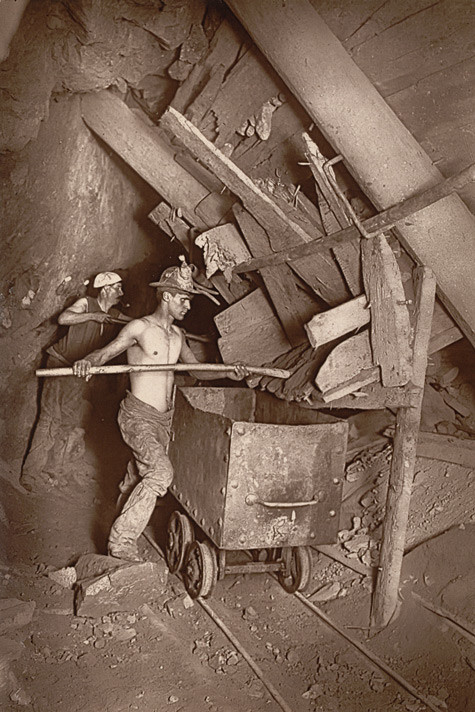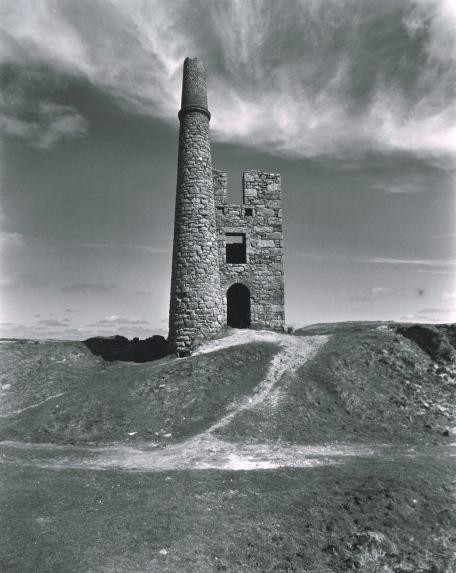Gone Cape Town: The Cornish Connection in the South African Mining Industry
The discovery and opening up of South Africa's diamond and gold fields coincided with the decline of the once predominant Cornish tin industry. This led in the 19th century to the 'great emigration' from Cornwall when up to a
quarter of a million miners and associated workers and their families left Cornwall.
The exodus gave rise to the quip in Cornwall that if you look in any hard-rock mine the world over you will find a 'Cousin Jack' (Cornishman) at the bottom. It also gave rise to the export of the Cornish pasty all over the world: they can still be found in Hildago, Mexico, (known as a paste) and which we came across, in a strangely transmuted form, as a 'Cornish Pie' - all meat and no potatoes - in a shop in Pringle on our way back from Montagu.

This is from the Cornish Diaspora Wikipedia page
During the gold rush period on the Witwatersrand many Cornishmen went to the then South African Republic [...] in order to seek their fortune. In fact, the pioneering of the Rand gold reef was largely down to the hardrock mining expertise that Cornishmen brought with them from their native country, where tin and copper had been obtained from granite for many centuries.
By the end of the 19th century the sheer numbers of Cornish miners on the Rand, sending up to £1 million a year back to Cornwall, even caused friction with the Kruger government which resented the wealth these "uitlanders" [foreigners] were sending home. The Kruger government's decision to tax these so-called uitlanders without any kind of legislative representation was one of the many reasons behind the outbreak of the Second Boer War. [...]
There is an area known as 'New Redruth' in Johannesburg and one area of Soweto bears the Cornish name, Baragwanath.
There is a 'Chris Hani [the murdered South African Communist Party leader, 1993] Baragwanath hospital' in Johannensberg. This was formerly the 'British Imperial Military Hospital, Baragwanath' and then became the 'native section' of the Johannesburg General Hospital. In 1997 it was declared the biggest hospital in the world in the Guinness Book of Records.

The name Baragwanath - meaning 'wheaten bread' or 'top of the wheat field' in Cornish - came from a Rand Pioneer, John Albert Baragwanath, (born 1839 Redruth, Cornwall) who arrived in the Rand in 1887 and established Baragwanath's Concordia Hotel and Store. He also prospected and was one of the first shareholders of the Vierfontein Farm Gold Mining Company. Whether or not he was a miner is uncertain. His son, Orlando, was one of the first people to survey the Katanga Copper Belt in Zambia. The Baragwanath Township was established in 1954.
For a British Pathe clip of Cornish miners in Camborne in 1966 click here.
Funnily enough, when I worked for Cornwall Neighbourhoods for Change we were first located in the Town Council Chambers in Redruth, and then at the old site of the world-renowned Camborne School of Mines. When we moved into the building there were still rock samples from all over the world in one part of it.
John Nauright estimates that in 1903 there were 17,000 to 18,000 Cornish miners working in the Rand - over a quarter of all miners. He suggests that the predominance of Cornish miners and their lack of a trade union history was a crucial factor in delaying the development of a trade union movement in the South African mines.
This may have been due to the existence of the ‘tribute’ system of wages in the Cornish mines, where teams of miners under a mine captain worked on a portion of the mine, keeping an agreed portion of the proceeds and passing the rest on to the mine owner.
Miners were being offered free passage to Cape Town in 1847. In the 1890s the Friday up-train from West Cornwall carried special ‘Southampton’ cars for miners leaving the county en masse for South Africa during the severe depression in the Cornish mines.
See: Nauright, J. Cornish Miners and the Witwatersrand Gold Mines in South Africa, c. 1890-1904

For links between Penzance and Mousehole quarrymen and Cape Town see The Rhodes Memorial
To: Poverty in the Western Cape
